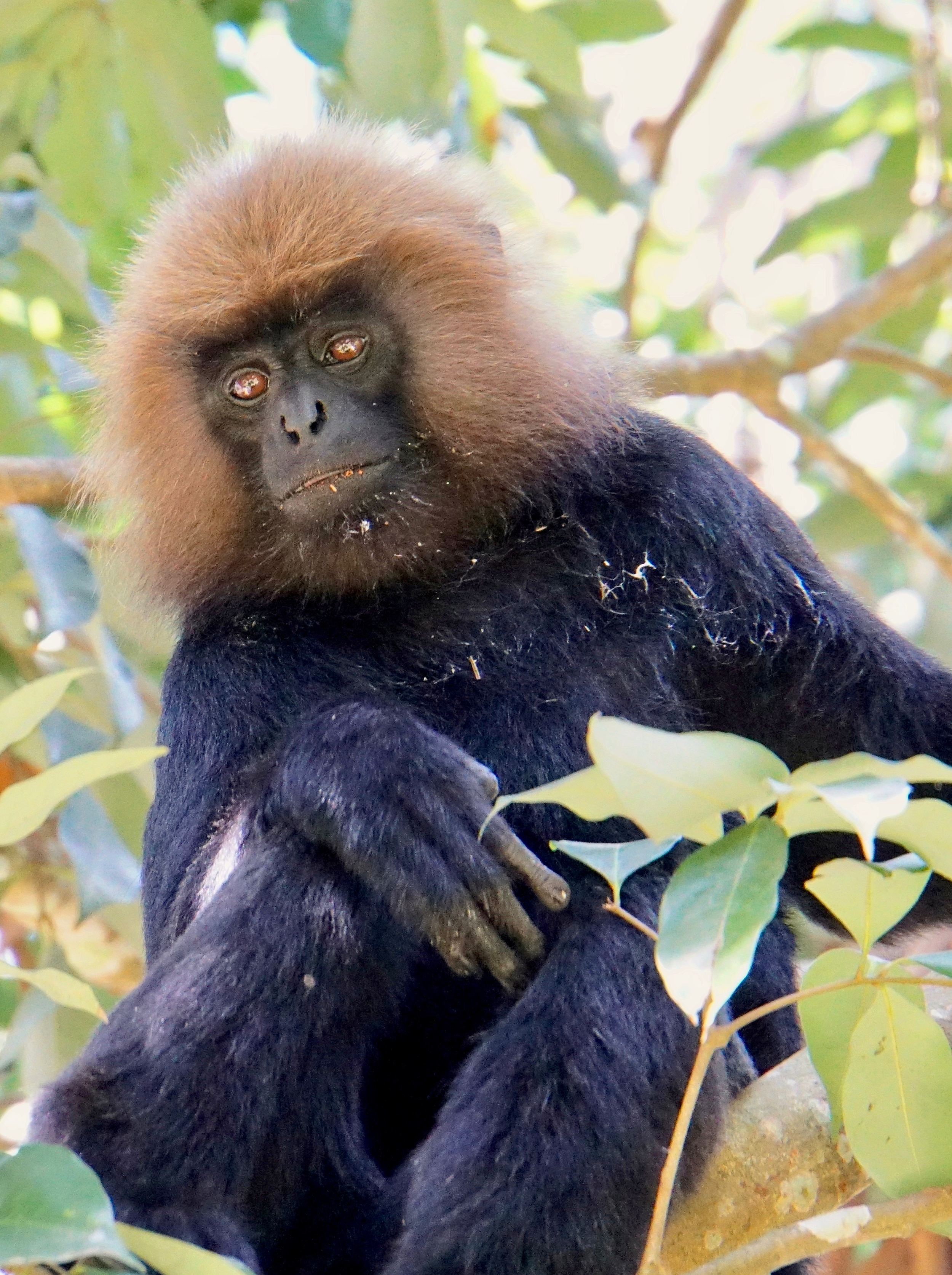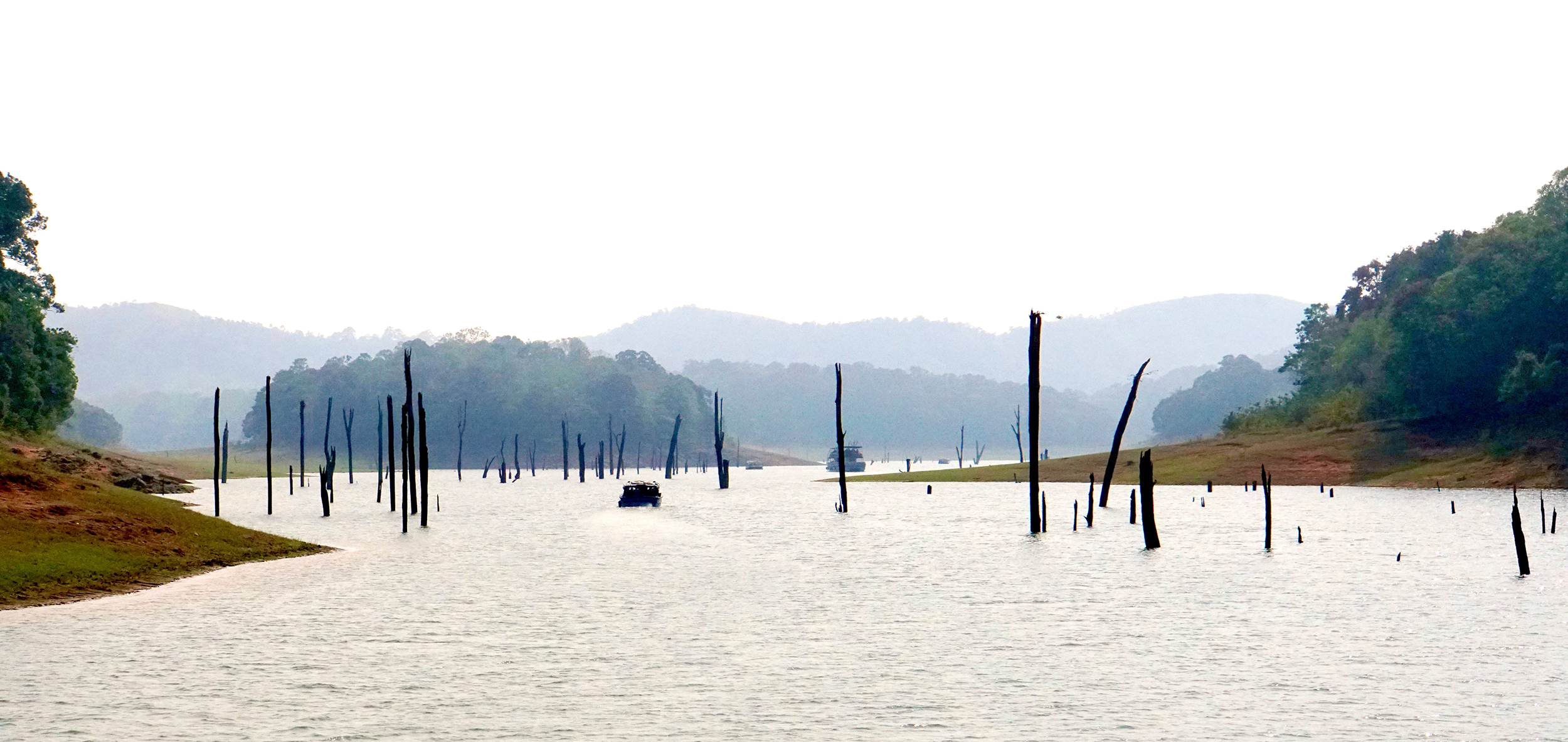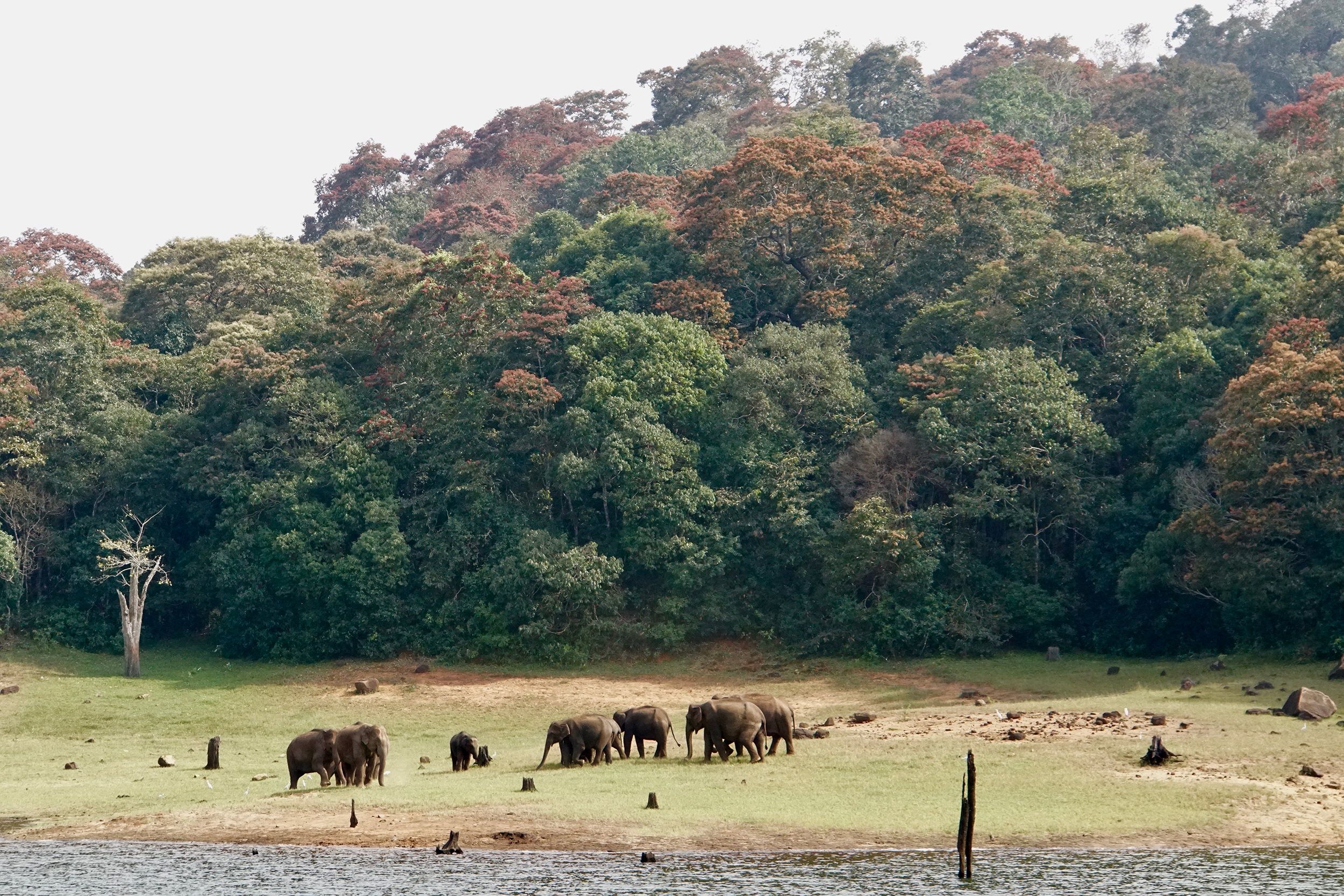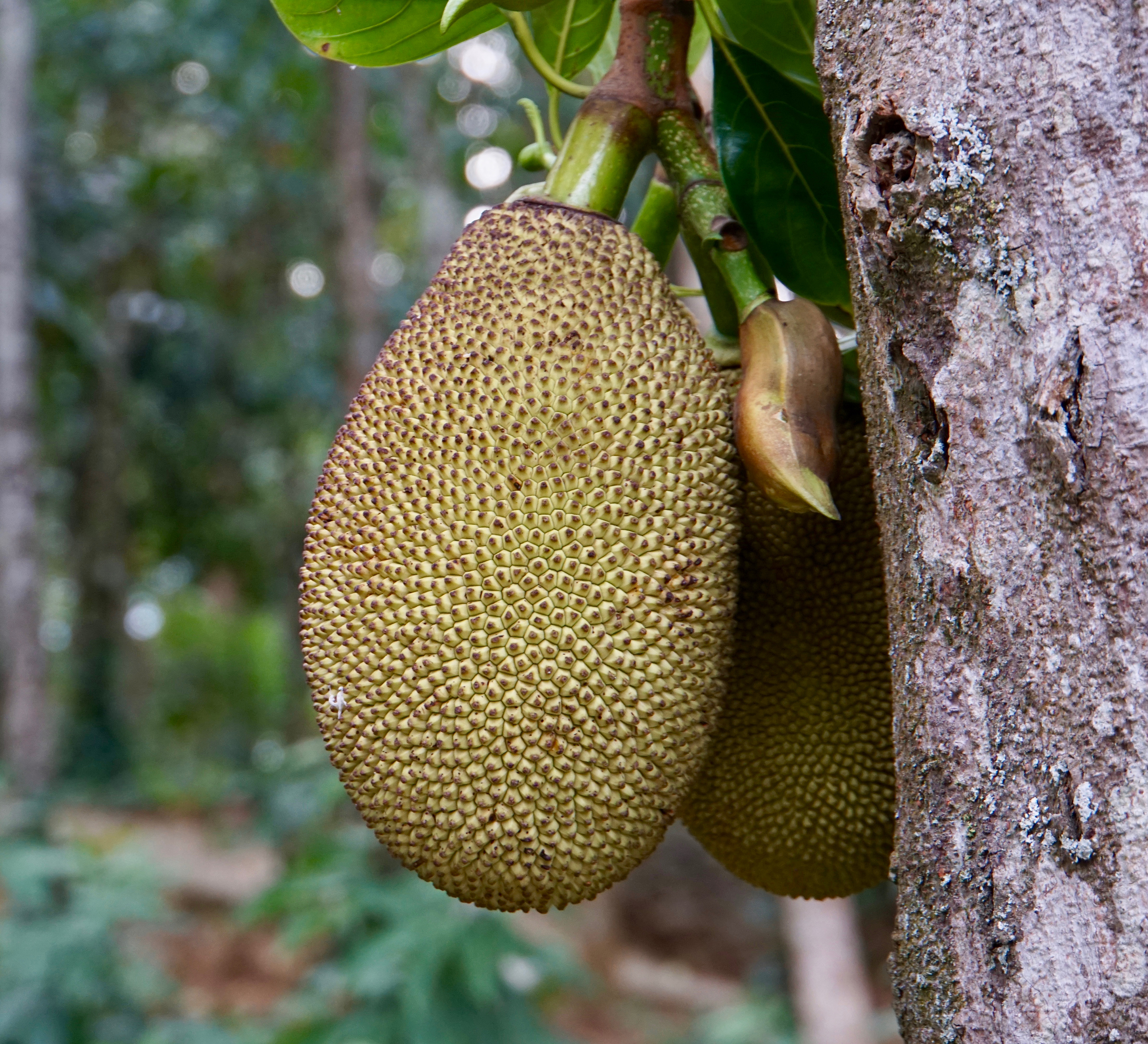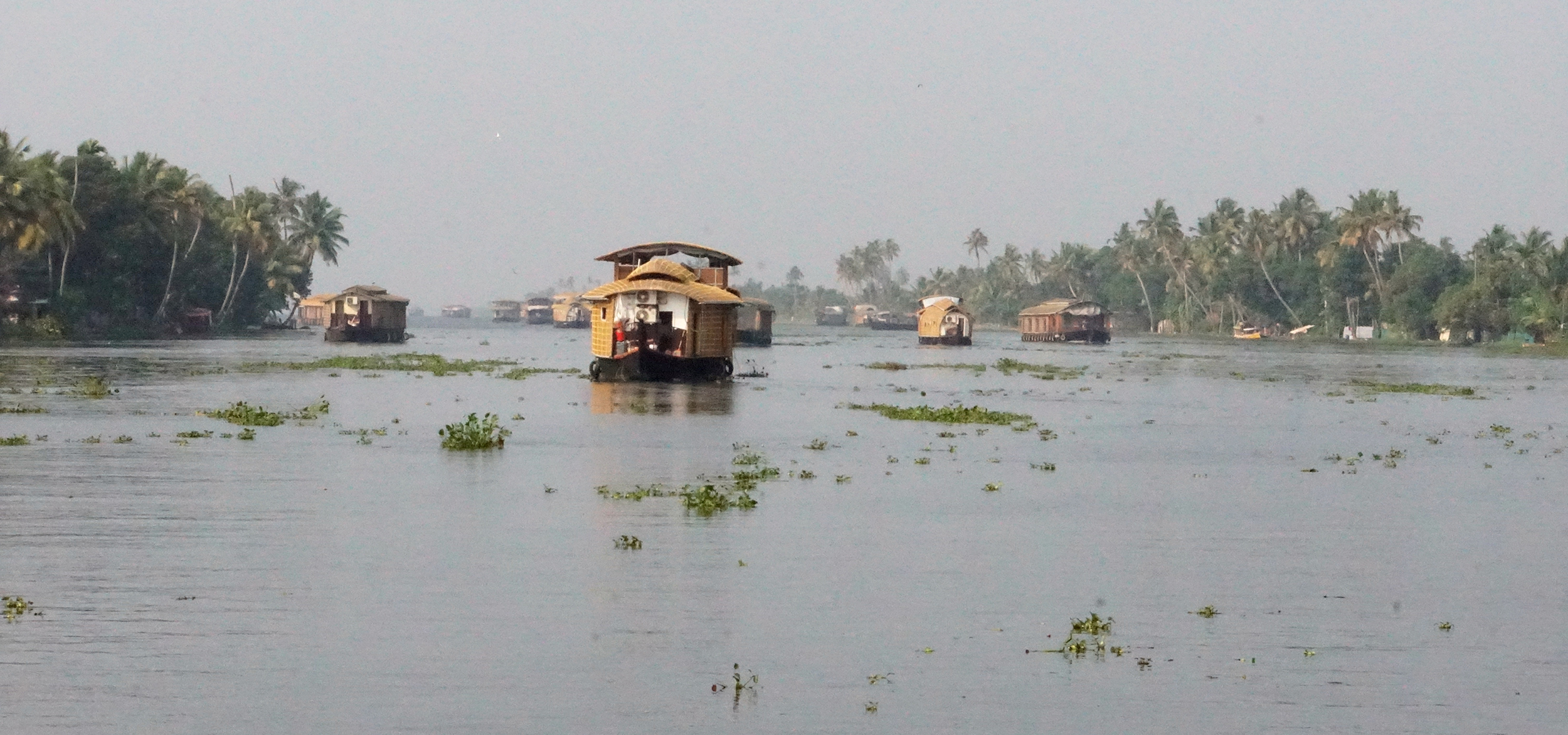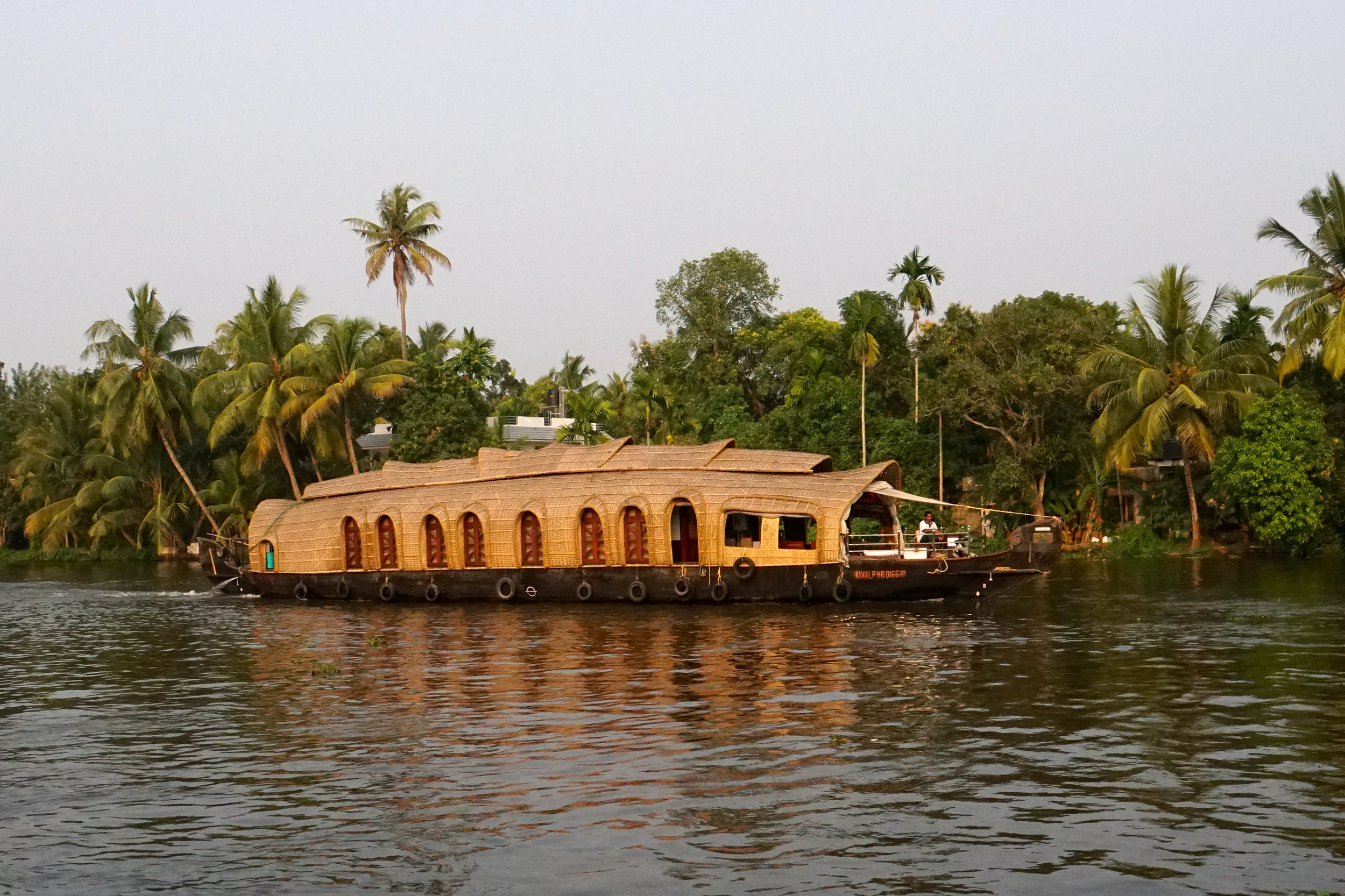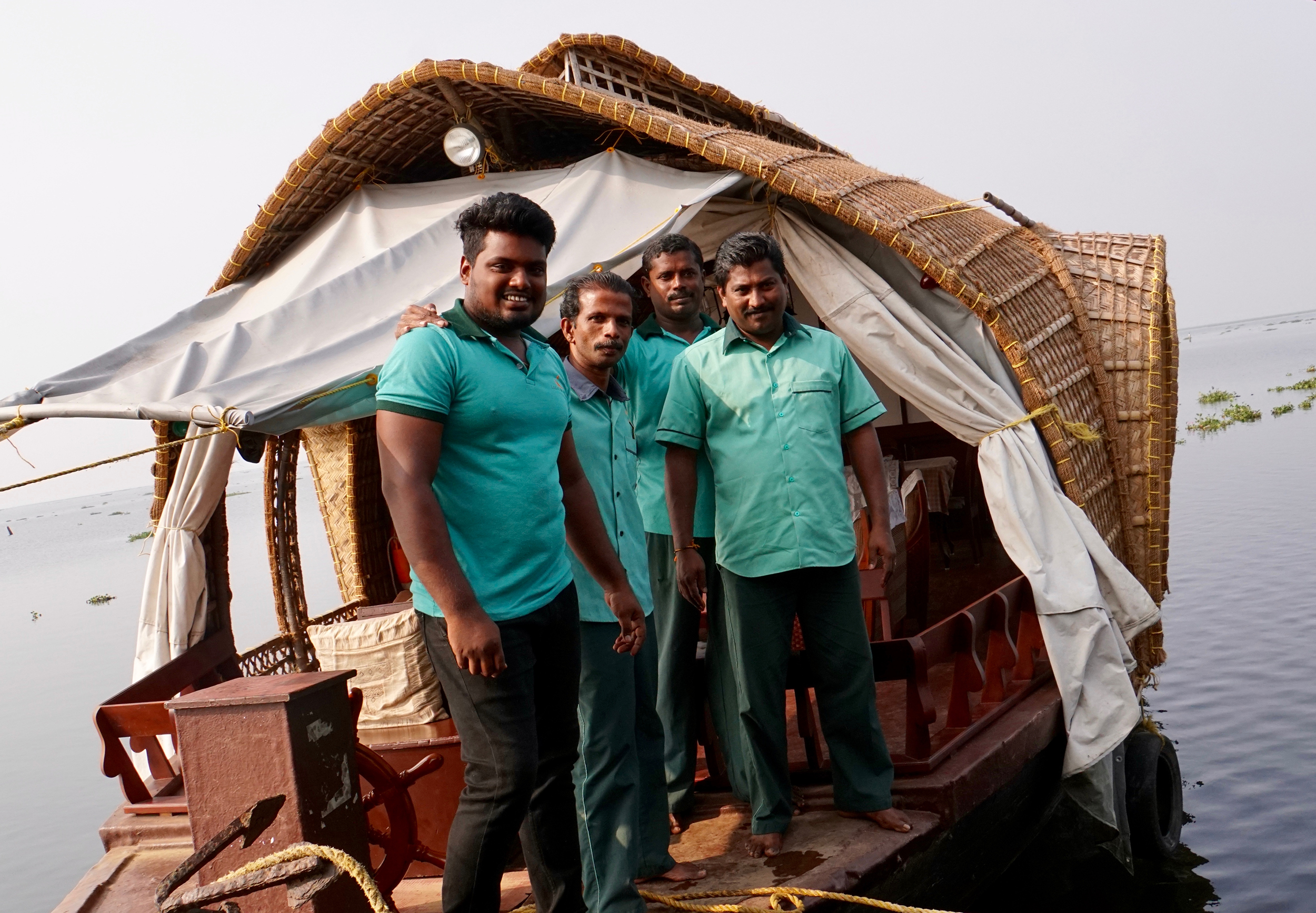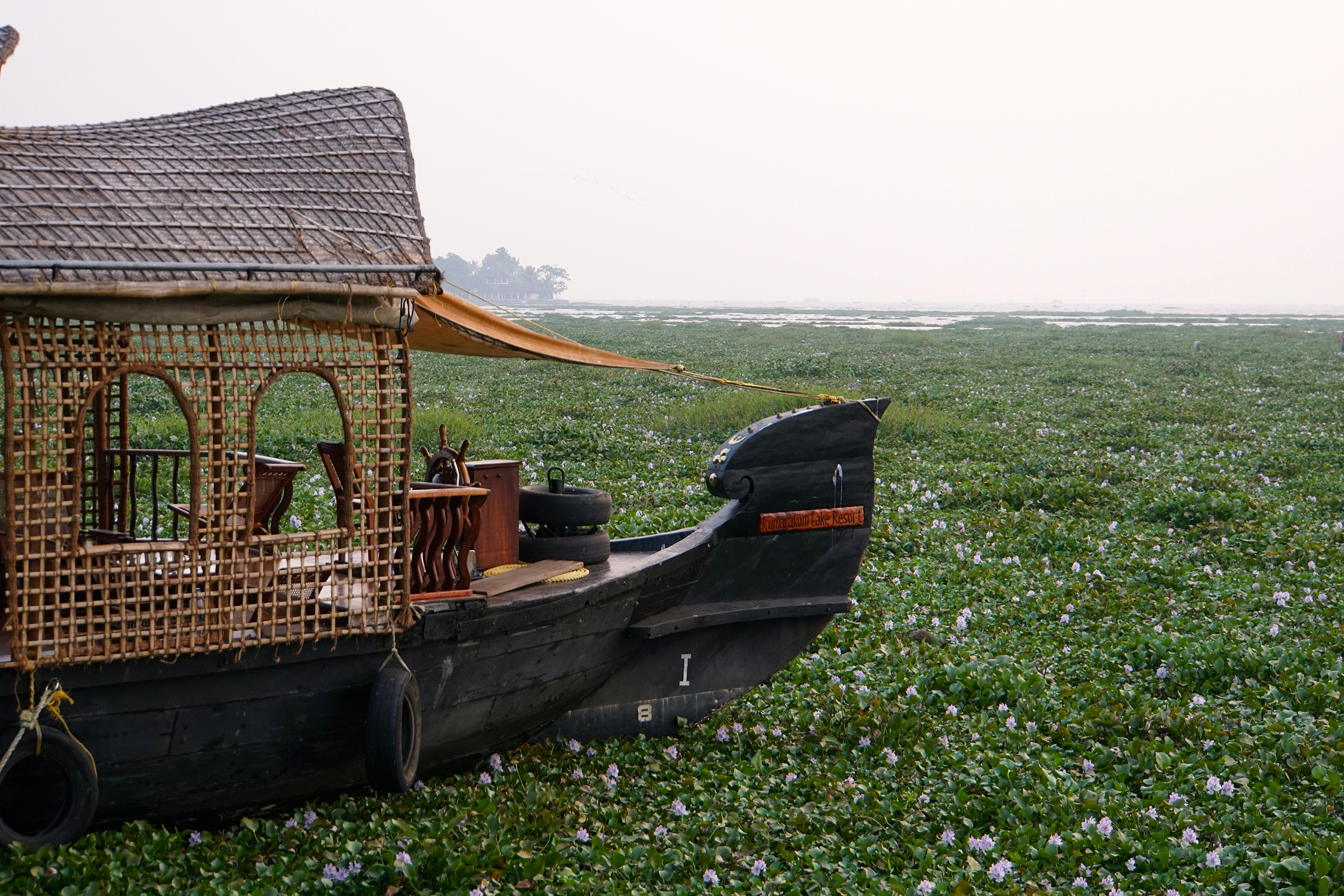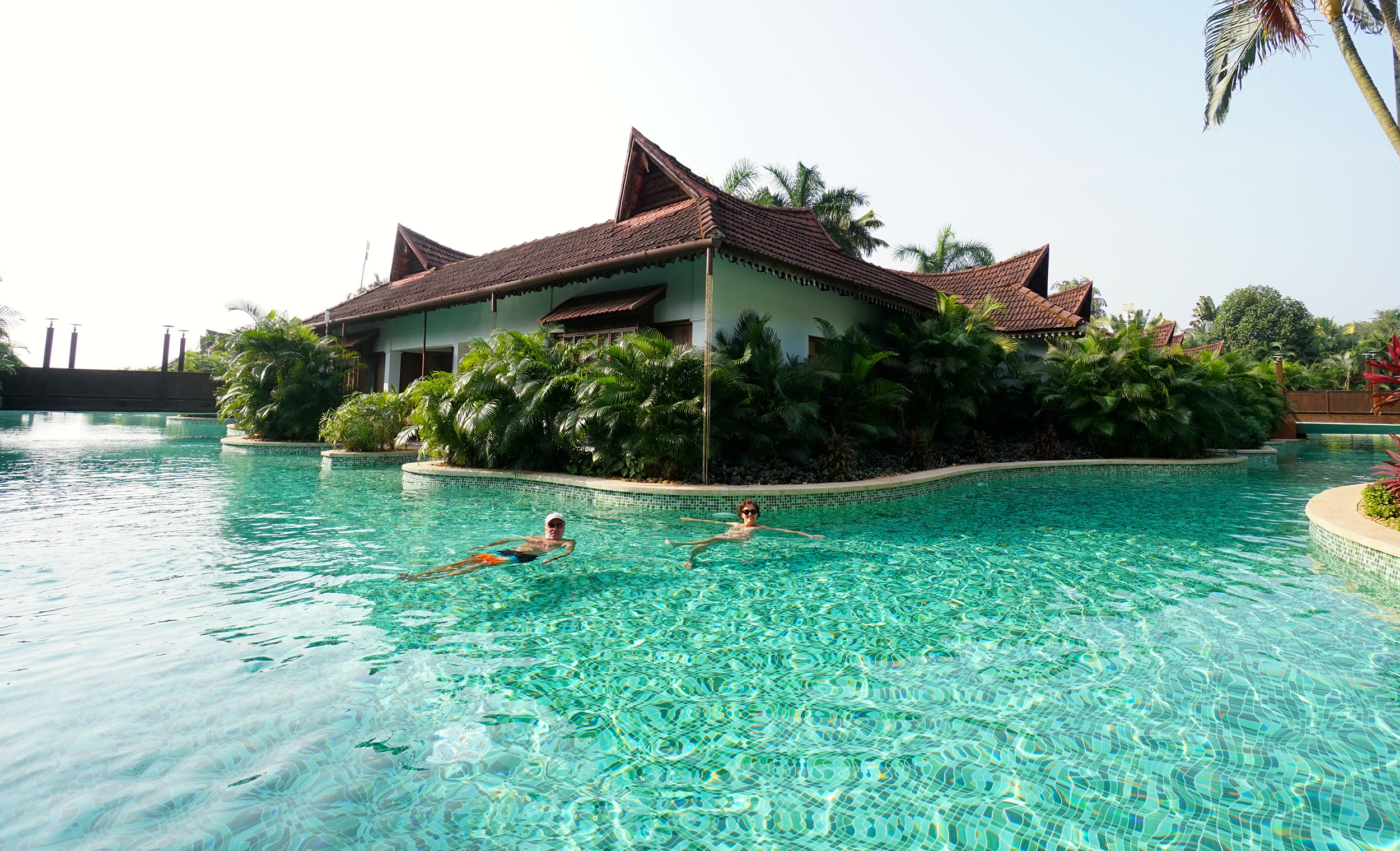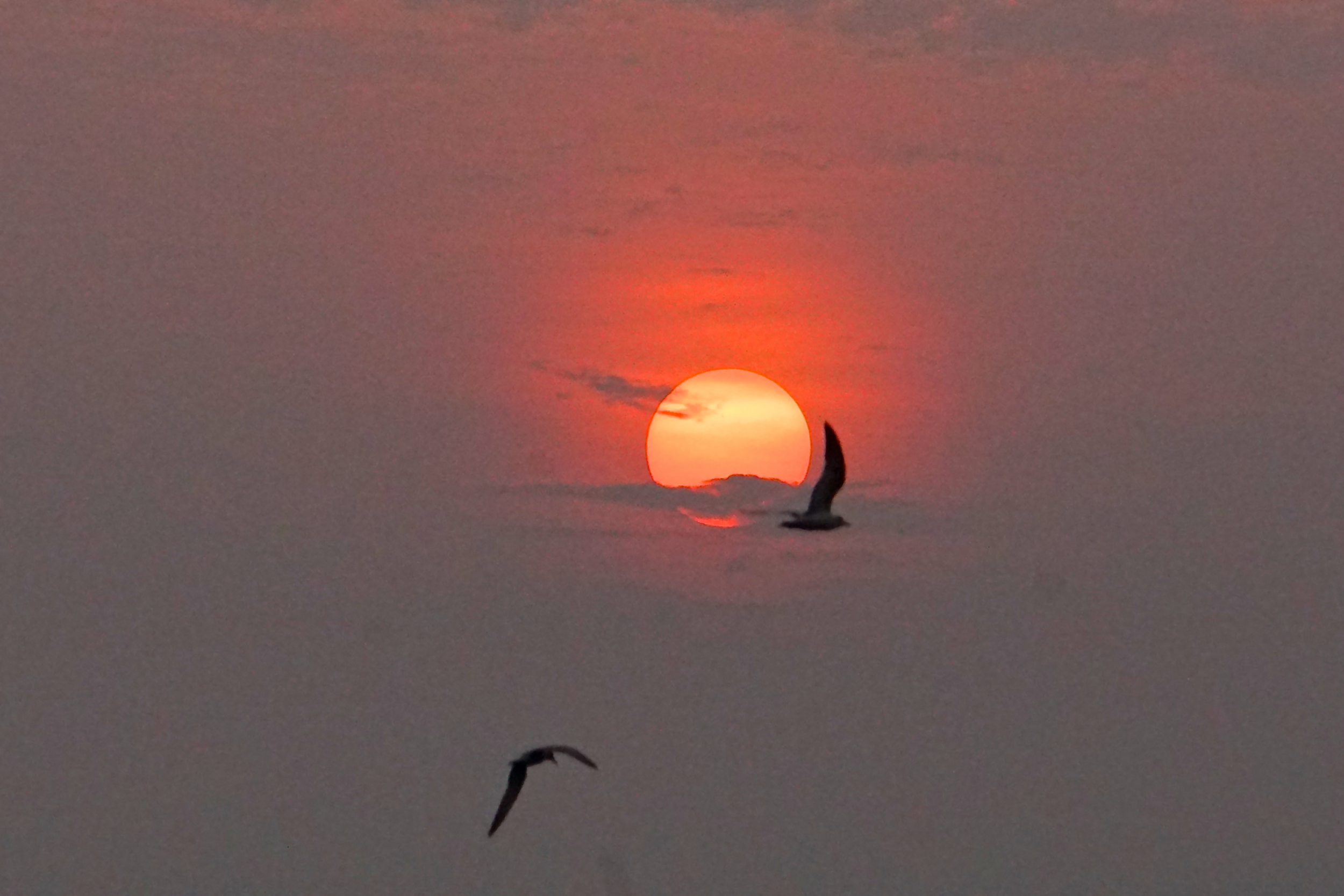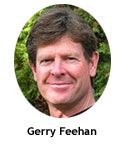 After three chaotic days in Mumbai, we boarded a plane for the relative calm of Kerala on India’s extreme southwestern tip. The “land of coconuts” is a tropical paradise dense with rainforest, wild elephants, monkeys, tea plantations – and spices.
After three chaotic days in Mumbai, we boarded a plane for the relative calm of Kerala on India’s extreme southwestern tip. The “land of coconuts” is a tropical paradise dense with rainforest, wild elephants, monkeys, tea plantations – and spices.
Kerala is home to a wonder of zesty flavours: pepper, cinnamon, liquorice, chili, cardamom, ginger, nutmeg, coriander, cumin, turmeric. For centuries, the colonial powers fought, won and lost wars over the exotic spice trade.
And from these amazing seeds and roots comes India’s great contribution to world cuisine: curry. We ate curry dishes breakfast, lunch and dinner for a month and never tired of the infinite variety and flavour.
In north India, meals were largely vegetarian, with the occasional chicken or mutton recipe thrown in. In Kerala, seafood is king and coconut accents every dish.
High in the hills of Periyar Wildlife Sanctuary, we were enjoying a birding and spice plantation tour when I heard a loud voice boom through a bamboo thicket: “What da ya call that? How many acres ya got here? What’s the name of that spice?”
It was Joe Tourist (see Part 3 in our series). Our serene ornithological outing was ruined.
We’ve all met Joe Tourist. He’s actually quite an affable, well-meaning fellow. J.T. maintains a permanent grin even when fumbling through his pack or staring incomprehensibly at a map. He’s overbearing and yet teddy-bear likable. He is demanding – but tips generously. His impatience is legendary. Mr. Tourist is not a stop-and-smell-the-flowers kind of guy.
When the guide explains something, Joe Tourist repeats it, in case you weren’t listening. And when he isn’t listening (which is most of the time), he insists the story be repeated in precise detail. His wife chides him for his foibles – but loves him dearly.
I suppose we all have a bit of Joe Tourist in us.
After a spicy few days in Periyar, we abandoned the hills, the monkeys – and J.T. – for the coast.
Kerala’s shoreline is chock full of brackish waterways and canals, used for transportation, fishing and, during the annual monsoon, to irrigate the endless fields of rice. These beautiful languid backwaters have also given rise to a robust tourist industry: houseboating on a kettuvallam. We boarded our quaint floating lodge at Alleppey for a gentle overnight cruise.
The European colonists left a curious legacy in Kerala: many Keralans have a Christian given name. Thus our captain Matthew guided us down the canal while mate Mark manned the lines and, in the galley, Luke prepared roti and fresh prawns. The fourth member of the crew was named, naturally, Ganesh.
Keralans are a warm, gentle people. In the morning, as we walked the rickety gangplank onto shore, the four disciples bid us a polite adieu. We had arrived at the luxurious Kumarakom Lake Resort, where we would spend our final two nights in India.
When you ask an Indian a question, the answer is often a non-verbal head-bobble. This gesture can have a number of meanings: yes, maybe, maybe not. To us westerners, this cryptic side-to-side head movement can be confusing, frustrating – and also enormously entertaining.
After checking in at the Kumarakom, I noticed we were short towels. I returned to the lobby and asked the chap at reception if he could remedy the problem. “I shall try my level best, sir,” he said with an assuring head-bobble. “Room service will fulfil your request, anon.”
Indians have borrowed many quaint British niceties; the bobble is theirs alone. And the towels did indeed appear – anon.
After a hectic four weeks, it was odd lounging around a quiet resort, removed from the overwhelming crush of humanity. We were soon bored with lazing in the infinity pool.
Florence and I exited the guarded gate for one last dose of India. People nodded shyly as we strolled the narrow lanes. A storefront business advertised ayurveda – Kerala’s ancient form of therapeutic massage. On a whim, we pulled out our last rupees. Within minutes, I was laying flat on a wooden-slatted table slathered in aromatic oil. When the session was done, the masseur handed me a glass of water.
I quaffed the whole jar and then asked, “Is this water safe … bottled?”
“Oh no sir, good water, not bottled,” he assured me, pointing to an earthenware vessel in the corner. I detected a slight head bobble.
It was Monday. We’d be home Wednesday. I prayed that any intestinal distress would be deferred for at least 48 hours.
The journey home was a two-day endurance test. To avoid a nationwide general strike and highway blockade brought on by the demonetization of the rupee, we left for Cochin airport at 5 a.m. for our flight back to India’s capital. We then had a half-day layover in Delhi before a 14-hour flight to Toronto.
As we searched for the Calgary departure gate at Pearson International, a hubbub emerged from the Air Canada first-class lounge. A guy was bellowing to his wife, “Okay, okay, we’ve done India. Where da ya wanna go next? I say we see Belize.” It was Joe Tourist.
We hurried by.
It was tough navigating the icy road home from Calgary. On arrival in Red Deer, unable to keep eyes open, we collapsed into bed at noon. Before passing out, I turned to Florence and said, “Oh my god, we’re going to Belize next year. Do you think we might run into that Joe Tourist guy again?”
“You never know,” she said. “It’s a small world.”
If you go
Explore India from Vancouver (www.exploreindia.ca) capably and professionally handled all aspects of our private month-long tour – air and land travel, hotels, meals, guides, drivers, entrance fees and activities – for one all-inclusive price.
Troy Media travel writer Gerry Feehan, QC, lives in Red Deer, Alta. He can be reached at [email protected]
The views, opinions and positions expressed by columnists and contributors are the author’s alone. They do not inherently or expressly reflect the views, opinions and/or positions of our publication.




